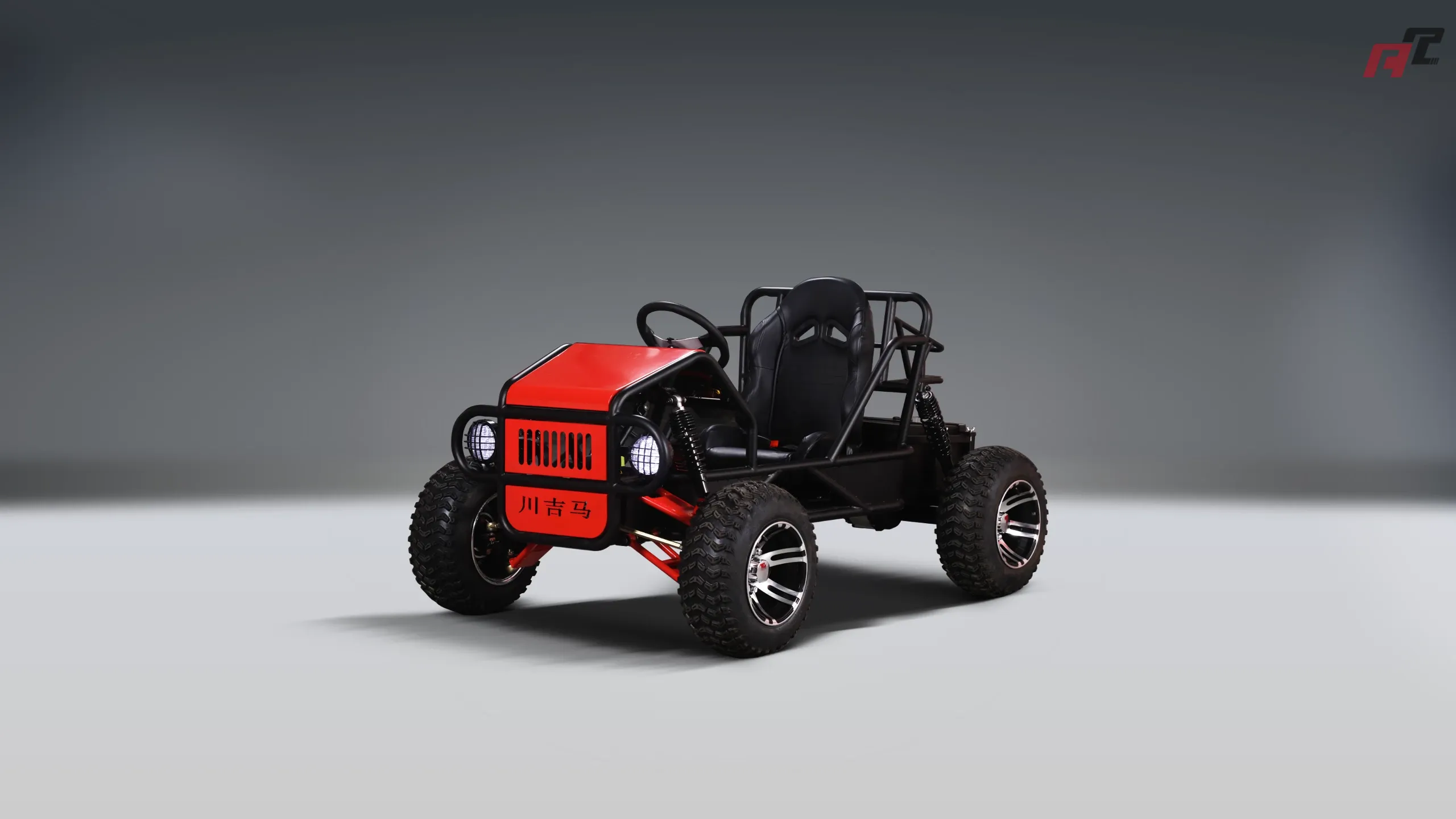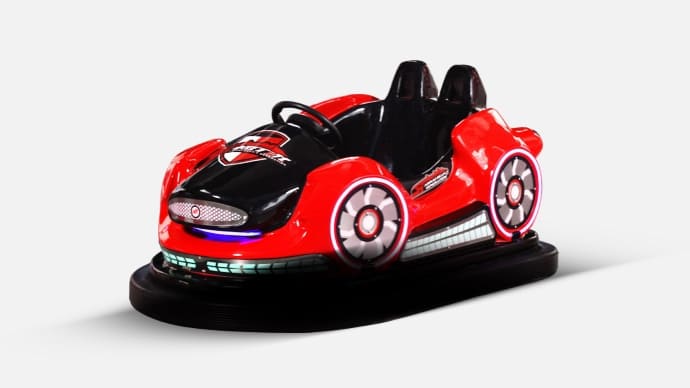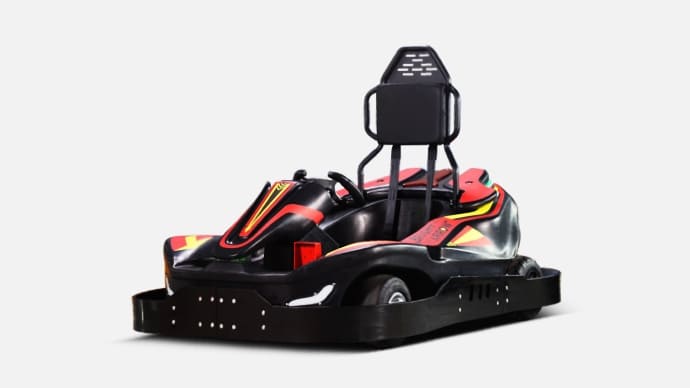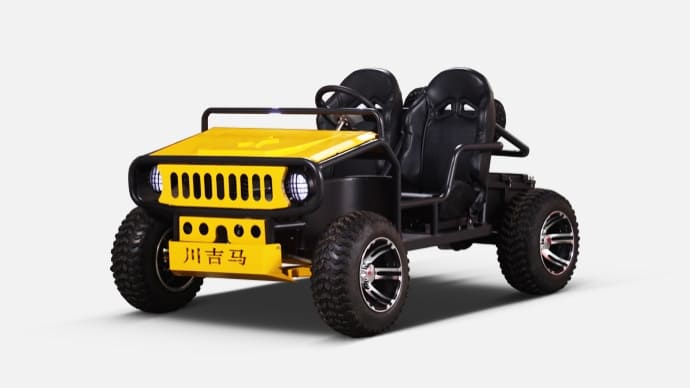Electric vs Gas Go Karts: Pros, Cons and Costs
- Electric vs Gas Go Karts: Pros, Cons and Costs
- Overview: why this comparison matters for venue owners
- Performance: acceleration, top speed and drivability
- Cost to buy: purchase price ranges
- Operating costs: fuel, electricity and per-hour running costs
- Runtime and turnaround: sessions, charging and refueling
- Maintenance and reliability
- Environmental impact and noise
- Safety and user experience
- Space, infrastructure and installation considerations
- When gas might still be the right choice
- Side-by-side comparison table
- Choosing for your venue: practical questions to guide selection
- Why many venues are shifting to Electric Go Karts
- About ANCHI Amusement: partner for electric and custom solutions
- How ANCHI supports new venues and fleet upgrades
- Conclusion: picking the best option for your business
- FAQ
- Q: How long do electric kart batteries last?
- Q: Can electric karts match gas kart speeds?
- Q: Are electric karts suited for outdoor tracks?
- Q: Which option has lower long-term costs?
- Q: How can ANCHI help me switch to electric karts?
Electric vs Gas Go Karts: Pros, Cons and Costs
Overview: why this comparison matters for venue owners
Choosing between Electric Go Karts and gas go karts is one of the most important decisions for kart track operators, family entertainment centers, and rental businesses. The right choice affects upfront investment, operating costs, noise and emissions, guest experience, and long-term maintenance. This article gives a practical, data-driven comparison to help you select the best platform for your venue.
Performance: acceleration, top speed and drivability
Electric go karts are known for instant torque — they accelerate quickly from standstill and deliver smooth power throughout the lap. Gas karts can reach similar top speeds depending on engine tuning, but electric drivetrains typically provide more consistent acceleration and easier throttle control for inexperienced drivers. For rental and indoor tracks where predictable handling and lower peak torque help safety, electric is often preferred.
Cost to buy: purchase price ranges
Upfront purchase price varies by model, features (bumpers, telemetry, safety systems), battery type, and whether the kart is youth, adult, or commercial-grade. Typical industry ranges (approximate, 2024) are:
| Metric | Electric Go Karts (commercial) | Gas Go Karts (commercial/recreational) |
|---|---|---|
| Typical purchase price per kart | $5,000 — $15,000 | $3,000 — $10,000 |
| Battery replacement (lithium) | $800 — $4,000 (every 3–6 years) | N/A |
| Engine rebuild/replacement | N/A | $500 — $2,500 (as needed, every few years) |
Note: prices depend heavily on region, customization, and warranty. Electric karts can be more expensive initially but may reduce operational costs over time.
Operating costs: fuel, electricity and per-hour running costs
Operating cost comparisons should include energy/fuel, consumables, and routine maintenance. Approximate per-hour operating costs are:
- Electric Go Karts: $0.50 — $3.00 per kart-hour (electricity + routine checks)
- Gas Go Karts: $3.00 — $10.00+ per kart-hour (fuel, oil, more frequent engine service)
Electricity prices and charger efficiency vary, but electricity is generally cheaper per hour than gasoline. Additionally, electric systems reduce oil and engine service expenses.
Runtime and turnaround: sessions, charging and refueling
Typical runtimes and turnaround behaviors:
- Electric: session runtime commonly 30–90 minutes on a single charge for commercial karts. Charging times range from 1–8 hours depending on charger type; many venues run shift rotations and use battery-swapping or fast-charging to maintain throughput.
- Gas: can run multiple hours until refueling is necessary, and refueling takes minutes. That quick refuel is advantageous for continuous high-throughput race formats.
For venues with high utilization, a battery management strategy (fast chargers, spare batteries, or swappable packs) is crucial for electric operations.
Maintenance and reliability
Electric go karts have fewer moving parts (no carburetor, fewer fluids, no exhaust systems), which typically lowers routine maintenance frequency and reduces downtime. Key maintenance items include battery health checks, electrical system diagnostics, brakes, and tires. Lithium batteries usually last 3–6 years or 500–2,000 cycles depending on care.
Gas karts require more frequent engine maintenance (spark plugs, oil changes, filters, carburetor or EFI tuning) and can incur higher labor costs. For commercial operators, planned maintenance schedules significantly affect total cost of ownership.
Environmental impact and noise
Electric karts produce zero tailpipe emissions and are quieter (typically ~70–85 dB at trackside) versus gas karts (often ~90–110 dB). For indoor tracks, strict ventilation requirements and emissions compliance make electric go karts the practical choice. Even for outdoor venues, guests and nearby communities often prefer lower-noise operations.
Safety and user experience
Electric karts deliver predictable, linear power and can be configured with electronic speed limiters, remote cutoff, and driver data systems. This allows operators to enforce safety limits and tailor performance by driver category (kids, teens, adults). Gas karts can be tuned for high performance but may require more skilled staff to maintain safe and consistent settings for rental customers.
Space, infrastructure and installation considerations
Electric tracks need a robust electrical infrastructure: charging stations, transformers, and safe battery storage. Gas tracks need fuel storage and ventilation for indoor operations. Both require space for maintenance bays and spare units; however, electric fleets often simplify exhaust ventilation and reduce HVAC load inside enclosed buildings.
When gas might still be the right choice
Gas karts can be attractive for outdoor leisure tracks where fast refuel time and lower upfront cost per kart are priorities. In some racing or hobbyist contexts where engine tuning and traditional karting experience are central, gas remains popular. But for family entertainment centers, malls, and indoor venues, electric is increasingly dominant.
Side-by-side comparison table
| Feature | Electric Go Karts | Gas Go Karts |
|---|---|---|
| Typical purchase price | $5,000 — $15,000 | $3,000 — $10,000 |
| Per-hour operating cost | $0.50 — $3.00 | $3.00 — $10.00+ |
| Runtime per charge/tank | 30 — 90 minutes (battery dependent) | 60 — 180+ minutes (fuel dependent) |
| Refuel/Recharge time | 1 — 8 hours (or minutes with battery swap/fast charge) | 2 — 5 minutes |
| Maintenance complexity | Lower; electric drivetrain, battery care | Higher; engine tune, fluids, filters |
| Noise | Quieter (~70–85 dB) | Louder (~90–110 dB) |
| Best for | Indoor tracks, family centers, noise-sensitive areas | Outdoor tracks, traditional karting enthusiasts |
Choosing for your venue: practical questions to guide selection
Ask these when deciding: Will you operate indoors? What is your expected hourly throughput? Do local regulations restrict emissions/noise? What is your capital budget vs. long-term operating budget? If you need predictable, quieter operations, Electric Go Karts typically win. If you prioritize the lowest initial cost and fast refueling for long uninterrupted days outdoors, gas may be considered.
Why many venues are shifting to Electric Go Karts
Trends over the last decade show growing adoption of electric karts in commercial venues due to lower operating costs, improved battery tech, reduced environmental footprint, and better guest experience. Electric drivetrains also enable advanced features like telemetry, adjustable performance modes, and integrated safety cutoffs that are attractive for modern entertainment centers.
About ANCHI Amusement: partner for electric and custom solutions
ANCHI Amusement is one of China’s leading manufacturers of amusement equipment. We design and build Electric Go Karts, bumper cars, off-road vehicles, and complete venue solutions. With over 5,000 m² of production space, multiple assembly lines, and a team of 30+ skilled technicians, ANCHI offers custom go-kart manufacturing and end-to-end venue design — from concept to execution. Learn more at https://www.anchiamusement.com/.
How ANCHI supports new venues and fleet upgrades
ANCHI provides tailored consulting for layout, fleet sizing, battery-management strategies, safety systems, and branding. Whether you need youth karts, adult electric karts, or a mixed fleet, ANCHI can deliver equipment, install charging infrastructure, and train staff for maintenance and operations — helping reduce downtime and maximize guest capacity.
Conclusion: picking the best option for your business
For most modern indoor and family-focused venues, Electric Go Karts offer compelling long-term advantages: lower per-hour costs, quieter operation, simpler maintenance, and cleaner guest experience. Gas karts still hold value for specific outdoor or enthusiast markets where fast refueling and lower initial capital are priorities. Evaluate total cost of ownership, venue restrictions, and guest expectations to make the right choice — and consider working with an experienced manufacturer like ANCHI Amusement to optimize your fleet and venue layout.
FAQ
Q: How long do electric kart batteries last?
A: Lithium batteries in commercial electric karts typically last 3–6 years or roughly 500–2,000 full cycles depending on charger quality, depth-of-discharge practices, and maintenance. Proper charging and storage extend battery life.
Q: Can electric karts match gas kart speeds?
A: Yes. Commercial electric karts can match or exceed the top speeds of comparable gas karts. Electric karts often deliver faster initial acceleration due to instant torque.
Q: Are electric karts suited for outdoor tracks?
A: Absolutely. Many outdoor tracks use electric karts successfully. You’ll need adequate charging infrastructure and a plan for battery swaps or fast charging if throughput is high.
Q: Which option has lower long-term costs?
A: Generally, electric karts have lower long-term operating and maintenance costs, though they may require higher upfront investment. Calculate total cost of ownership across 5–10 years for a clear comparison.
Q: How can ANCHI help me switch to electric karts?
A: ANCHI offers custom electric kart manufacturing, charging solutions, venue design, and after-sales support. We can assess your current operations and design a phased upgrade or full replacement plan tailored to your budget and capacity needs.
Wholesale cocomelon bumper car manufacturer and supplier
OEM/ODM electric go kart conversion Manufacturers and supplier in China
Wholesale kid bumper car manufacturer and supplier
Eco Benefits and Cost Savings of Electric Go Karts
About Cooperation Process
What information do I need to provide to start the cooperation process?
You need to provide your company information, product needs, venue information, customization requirements, cooperation intentions and other relevant information.
About Product Choice
What is the difference between your battery bumper car and a ground net bumper car?
Our battery bumper cars are charged by battery charging cycles, which only need a flat ground and have a lower investment cost, while the ground net bumper cars need a special floor.
Can I customize special specifications or packaging?
Yes, we provide customized services, you can customize special specifications, packaging and private label etc. according to your needs.
Cyclone RS 2025
Is it safe for children?
The seat is designed for riders above 1.55 m in height, making it suitable for teenagers and adults. A four-point seat belt and hydraulic braking ensure safety.
About Logistics
Can I change my shipping address?
Yes, you can contact our customer service team to modify the delivery address before order confirmation to ensure that the order can be accurately delivered to the address you specify.

Bright Arrow Electric Go Karts
2024 new model with two powerful hub motors; each motor is 1000 watts with shock absorbers. It has fast-charging iron phosphate lithium that can be cycled 2000 times. It has three speeds. Remote control for starting, checking accounts, and setting volume. LCD dispay for showing speed, battery power, and game time.

Blue Fire Electric Go Karts
Experience the thrill of speed with ANCHI's Blue Fire Electric Go Karts, perfect for both adults and kids. These high-performance electric go karts deliver unparalleled excitement while ensuring safety and reliability. Ideal for family fun or competitive racing, our electric go karts blend innovation with cutting-edge technology. Explore the future of racing with ANCHI, where performance meets sustainability. Discover more today and rev up your passion for adventure with our premium electric go karts.

Cyclone RS 2025 1200W Electric Go-kart for Home Entertainment Centers
The Cyclone RS 2025 is a high-performance electric ride-on car designed for thrill-seekers, entertainment centers, and commercial amusement businesses. Built with a durable ABS body and reinforced metal chassis, it combines strength, safety, and speed for a superior driving experience. With a 1200W mid-mounted motor (peaking at 3600W), advanced control system, and long-lasting 72V20AH LiFePO₄ battery, this ride ensures both powerful performance and reliability.
Whether for amusement parks, game zones, rental businesses, or personal recreational use, the Cyclone RS 2025 delivers unmatched excitement and durability.

Kids Electric Off Roads One-seater ATV
Discover adventure with the ANCHI Kids Electric One-seater ATV, the perfect electric off-road experience for young explorers. Designed for safety and performance, this electric off-road go kart for kids offers unmatched thrills on any terrain. Its durable build and easy-to-use controls ensure a fun and safe ride. Ideal for budding adventurers, this ATV promises endless excitement. Explore the world with confidence with ANCHI’s innovative electric off-road solutions for kids.











